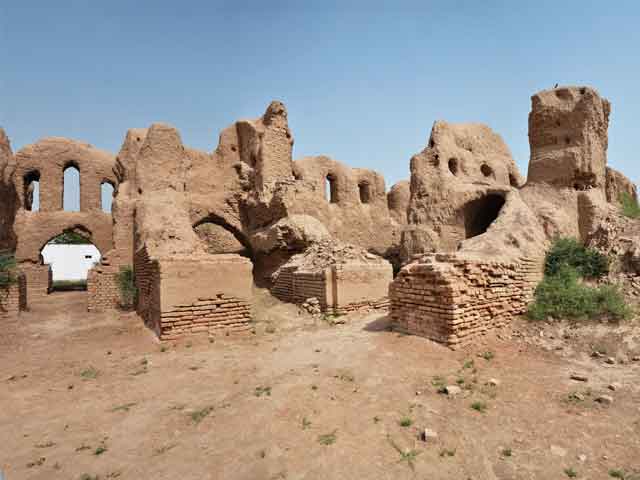The settlement of Dalverzintepa is located in Shurchinsky district of Surkhandarya region, in the fertile valley of Surkhandarya. Its beginning dates back to the III century. BC. E., Flourishing falls on the era of the Kushan Empire (I-IV centuries AD), decline - in the IV-V centuries.
The Kushan empire reached its peak under King Kanishka I when this mighty state reached such a high level of development and stability that it competed with trade and cultural exchanges with the other three Eurasian super-empires of the ancient world - the Roman, Parthian and Chinese Han. This four "great powers" of antiquity, spread its influence throughout the territory from the Atlantic to the Pacific. Later, historians will call this period (I-IV centuries AD) "imperial". It was at this time that the largest caravan road - the Great Silk Road - stretched from China through zemskushan and Parthian to Roman Syria.
One of the most significant achievements of the Kushan era was a high level of culture, in which the achievements of the local civilization of the ancient Eastern type were melded, the best traditions of Hellenistic culture, the sophistication of Indian art and the special style brought by nomadic tribes from the vastness of Asia.
One of the reasons for creating similar circumstances in the state was the policy of interethnic and inter-confessional tolerance, carried out by the Emperor Kanishka. Caravans of foreign merchants and pilgrims traveled with pleasure in the Kushan Empire, since in this state a very favorable and fertile environment was created for the friendly coexistence of all peoples and people, regardless of their race and spiritual orientation. At the same time, the flowering, the further spread and retransmission of Buddhism along the Silk Road towards East Turkestan, China, and then, somewhat later, to the Korean peninsula and Japan, occurred.
Archaeological Dalverzintepa is almost a "sterile" ancient city, excavations of which make it possible to study the urban features, fortification, architecture, art and material culture of Northern Bactria, especially for the time of the Great Kushans.
According to G. Pugachenkova, "a comparison of historical and archaeological data gives grounds to identify it with that original Kushan capital located north of the Amu Darya, which under the name Khodzo appears in the ancient Chinese chronicle."
The systematic study of Dalverzintep began in 1967. Excavated by archeologists, an ancient settlement of about 47 hectares was literally stuffed with artifacts. In the north-western part of the site, a temple of the Bactrian goddess has been excavated, where sculptures of deities and unique examples of wall paintings depicting priests and babies were discovered. In the center found a Buddhist temple II-III centuries. N. E. In the countryside there were found the ruins of another Buddhist sanctuary erected, judging by the finds of coins, even earlier - around the 1st c. N. E. Both cult complexes were once decorated with clay and plaster sculpture. Archaeologists have discovered more than three dozen magnificent sculptures of different sizes - from half a meter to 3 and 4 meters in height. Among them are numerous statues of Buddha, bodhisattvas, other Buddhist characters, sculptural images of the ruler, his heir, noble lady, grandee.



